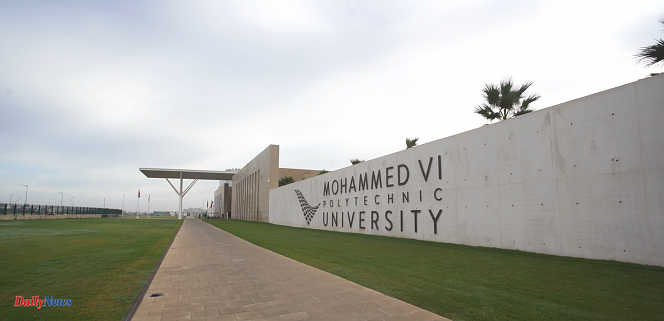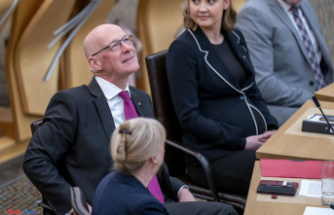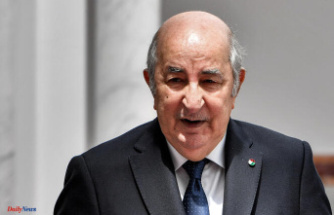The 5,000 m² building looks like a Moroccan “MIT” in the suburbs of Rabat. Its dome, in particular, which occasionally serves as an aviary for aerial drones, is a nod to the Massachusetts Institute of Technology, where the emblematic boss of the Office of Cherifians of Phosphates (OCP), Mostafa Terrab , was once taught.
Co-founded in 2021 by OCP, the Moroccan artificial intelligence (AI) center – called AI movement – is the fertilizer giant’s main investment in this technological revolution. A pioneering project, while Morocco is still slow to adopt an action plan dedicated to AI. Proof of the ambition of its sponsor, who has already invested heavily in education and the energy transition, it is in the premises of AI movement that the first African AI summit will be held from June 3 to 5.
But if MIT is a model for AI movement, the means deployed by the two institutions are incommensurate: while the American university has invested more than a billion dollars in its faculty dedicated to artificial intelligence, the center Moroccan only receives one million euros from OCP each year, the group is also responsible for paying its employees. In 2023, research contracts financed by companies and income from training brought its budget to €3.5 million. An amount higher than that of the Saudi center ICAIRE and its Slovenian counterpart IRCAI.
Drone swarms
Supervised by Amal El Fallah Seghrouchni, from the CNRS-Sorbonne University computer science laboratory (LIP6), the seven teacher-researchers and eighteen doctoral students attached to the center are working on concrete solutions to the problems of inequality and energy consumption. , sustainable cities… One of their flagship projects is a mobile application, which scans documents written in French or English and transforms them into an audio file in Arabic. “There are still a high number of illiterate women in rural areas in Morocco. With this application, they can understand personal documents, such as medical prescriptions, without having to share them with third parties,” explains doctoral student Houda Saffi, who is planning a translation into Darija, the Moroccan dialect of Arabic.
Youssef Osrhir, Reda El Marhouch and Yahiya Moukhlis are working on the deployment of swarms of drones by optimizing their energy consumption, ensuring their autonomous navigation and decentralizing decision-making – in order to increase the number of vehicles. “Drones have become essential for civil and military applications, such as precision agriculture, the observation of illegal migratory flows and the surveillance of sensitive areas,” specify the three doctoral students.
The Moroccan authorities are attentive to these innovations, which also include the restoration of heritage, the optimization of trash collection or the mapping of wealth. This latest project, which combines AI techniques and satellite imagery, has already been applied in Morocco in cooperation with the Ministry of the Interior. A security solution, based in part on user feedback, also attracted the Moroccan police. Companies are interested in programs for professionals, with which the center earns half of the income from its training. On the benches recently, there were engineers from OCP, executives from the Attijariwafa bank as well as an HR director from Cosumar, the historic sugar operator in Morocco.
Water filtration
AI Movement also supports project leaders from other African countries. Women exclusively, because “we want to move away from the classic pattern which wants science to be a domain reserved for men”, confides Amal El Fallah Seghrouchni, who chose to give the main AI Movement amphitheater the name Fatima Al Fihriya, who founded the Al Quaraouiyine University in the 9th century in Fez, considered the oldest in the world still in activity.
In the cohort supported this year, a woman from Benin, where a third of the rural population does not have access to drinking water, designed an intelligent water filtering solution. Another, from Tanzania, where poultry parasites are a major problem, has developed an application that detects chicken diseases from their droppings.
“The question now is how to sell these emerging innovations,” points out Amal El Fallah Seghrouchni, who sees the insufficiency of funding sources as the weak point of AI in Africa. “The role of governments and investment funds is essential. It is therefore essential for each African state to develop a national AI strategy,” she emphasizes.
The project of establishing a continent-wide roadmap will be one of the challenges of the African AI summit. Amal El Fallah Seghrouchni hopes that the event, which will be attended by ministers and representatives of the African Union, will focus on the continent's priorities: energy transition, climate change, food security, education, 'job. “Nearly 80% of the United Nations development goals can be achieved or improved by AI,” she assures.












